The Gift of South Dakota
Subscriptions to South Dakota Magazine make great gifts!
Subscribe today — 1 year (6 issues) is just $29!
Who Was Peter Shannon?
Nov 18, 2014
Lost among the Democratic and Republican hurrahs and disappointments of the Nov. 4 election was an interesting development on the Pine Ridge Indian Reservation. Residents there voted overwhelmingly to change the name of Shannon County, the entirety of which includes the reservation, to Oglala Lakota County.
The final tally was 2,161-526; the 80.4 percent of votes in favor of the change far exceeded the two-thirds necessary. There’s still some political rigmarole that must transpire before the change becomes official. Once all provisional ballots have been certified, the county commissioners must notify the governor. The governor then relays the name change to the Legislature in January. After the Legislature passes a joint resolution, the governor can officially issue a proclamation recognizing the change. Shannon County becomes Oglala Lakota County on the first day of the month following the proclamation.
There are 66 counties in South Dakota, many of which are named after territorial founders or prominent 19th century national politicians. Shannon County’s name comes from Peter C. Shannon, chief justice of the Dakota Territorial Supreme Court from 1873 to 1881. But it’s Shannon’s role in obtaining land from the Lakota that led to his name’s ouster 130 years later.
Shannon was a Pennsylvania native who practiced law in Pittsburgh. After his defeat for a seat in the U.S. House of Representatives in 1852 as a Democrat, he was appointed president judge of the local district court. He later became a Republican and a supporter of Abraham Lincoln. He helped escort Lincoln through Pennsylvania en route to the new president’s first inauguration in 1861. He served two terms in the Pennsylvania House and raised a regiment called The Irish Dragoons during the Civil War.
After the war Shannon practiced law until President Ulysses S. Grant appointed him chief justice of the Dakota Territorial Supreme Court. He presided over several trials in Yankton, but the most famous was surely the trial of Jack McCall for the August 1876 murder of Wild Bill Hickok in Deadwood.
During his time on the bench he became close allies with Gov. Nehemiah Ordway, a somewhat dictatorial figure who presided over the relocation of the capital from Yankton to Bismarck, earning the scorn of southern Dakotans. Shannon also fell out of favor with territorial lawyers who successfully blocked his application for reappointment in 1881.
George Kingsbury described the situation in scathing eloquence in his 1915 History of Dakota Territory: “His second term had not been marked by that friendliness, respect and confidence that should exist between the presiding judge and the members of the bar practicing in his court, but on the contrary, there had grown up a feeling of distrust toward the judge, and an entire and a total lack of confidence in his official integrity.”
Dakota Territorial lawyers wrote a list of grievances against Shannon and approved them on March 25, 1881. The charges were:
insulting attorneys and parties in open court;
offensive partisanship in criminal cases;
has endeavored by threats and other coercive means to secure endorsement of attorneys for reappointment;
has been publicly intoxicated, and the habit has grown on him;
with writing fictitious letters.
Instead Alonzo Edgerton, a U.S. Senator from Minnesota, was appointed to fill the chief justice position and began in January 1882. Shannon found his way onto a committee with former Gov. Newton Edmunds and James Teller, of Ohio, to negotiate land sales with tribes on the Great Sioux Reservation west of the Missouri River.
They endeavored to acquire 11 million acres. In return the government promised 25,000 cows and 1,000 bulls to be divided across the remaining reservation land.
“The commission had to obtain 3/4 of adult male signatures per tribe,” says Jesse Short Bull, an organizer behind the name change. “It was not a popular concept. The interpreter, Samuel D. Hinman, was accused of intimidating people to sign or face military removal. Hinman also acquired signatures from children as young as five years old at area day schools on the Pine Ridge Agency.”
It took the efforts of two more commissions before the signatures were finally obtained and the land transferred. Short Bull says it seems like Shannon was the odd man out on the commission, but he nevertheless played a role in shaping Lakota life. “When you think of the line of incompetent military officers to ill prepared Indian agents that the tribes had to deal with, Shannon was not in their category. He was a smart man, and vowed no wrong doing on his part when the Edmunds Commission was being questioned. With that being said, he was still part of the driving force that changed the course of history for the tribes and everything that came with that — the breakdown of Lakota culture and the introduction to a new way of life.”
Shannon lived somewhat quietly until poor health led to his move to San Diego in the late 1890s. On April 13, 1899, he boarded a carriage en route to Point Loma. Shortly after departure the driver lost control of the horses, which swerved toward the sidewalk and struck a telegraph pole. Shannon was thrown from the carriage and died later that night from internal injuries.
He was buried at Calvary Cemetery in San Diego, but over time the cemetery fell into disrepair. Headstones were removed, and over time the area became Calvary Memorial Pioneer Park. Today the only traces of Shannon are his name on a brass plaque in San Diego and his county in South Dakota, although that will soon be removed by the people he helped to remove 130 years ago.


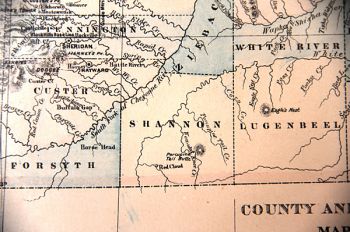
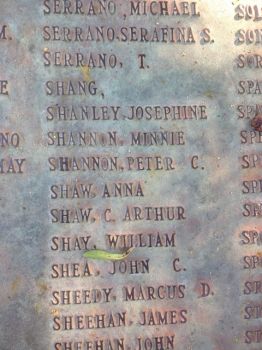

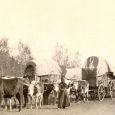
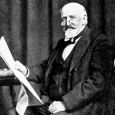

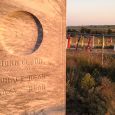
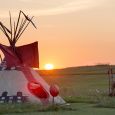


Comments
The county should have been given the name of the people who dominated the land at the time, but there are other counties that deserve that recognition too. Unfortunately, during that era, this wasn't considered at all. I'm glad it has been changed.
I did half to laugh at the white girl, Mentele or something on the news who wants marijuana legalized in SD. after all why should she move to Colo. when her family has lived in SD for hundreds of years.....you might want to interview her,,since we just celebrated 125 years or maybe she is taking the dope illegally.